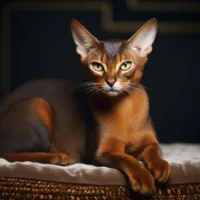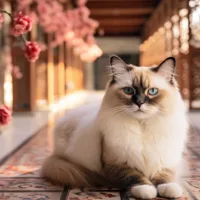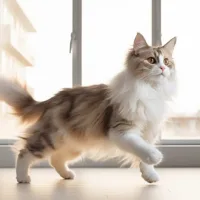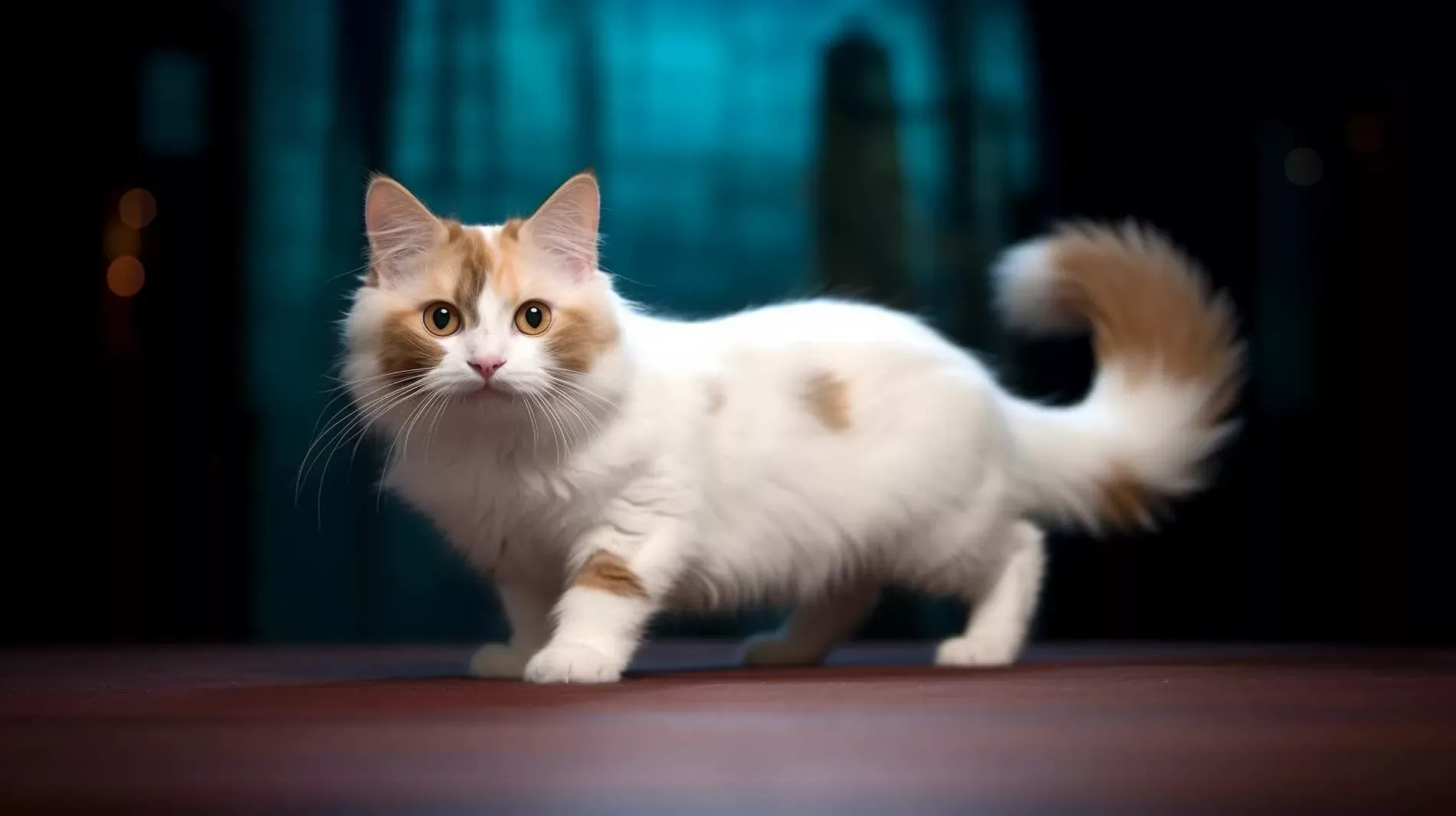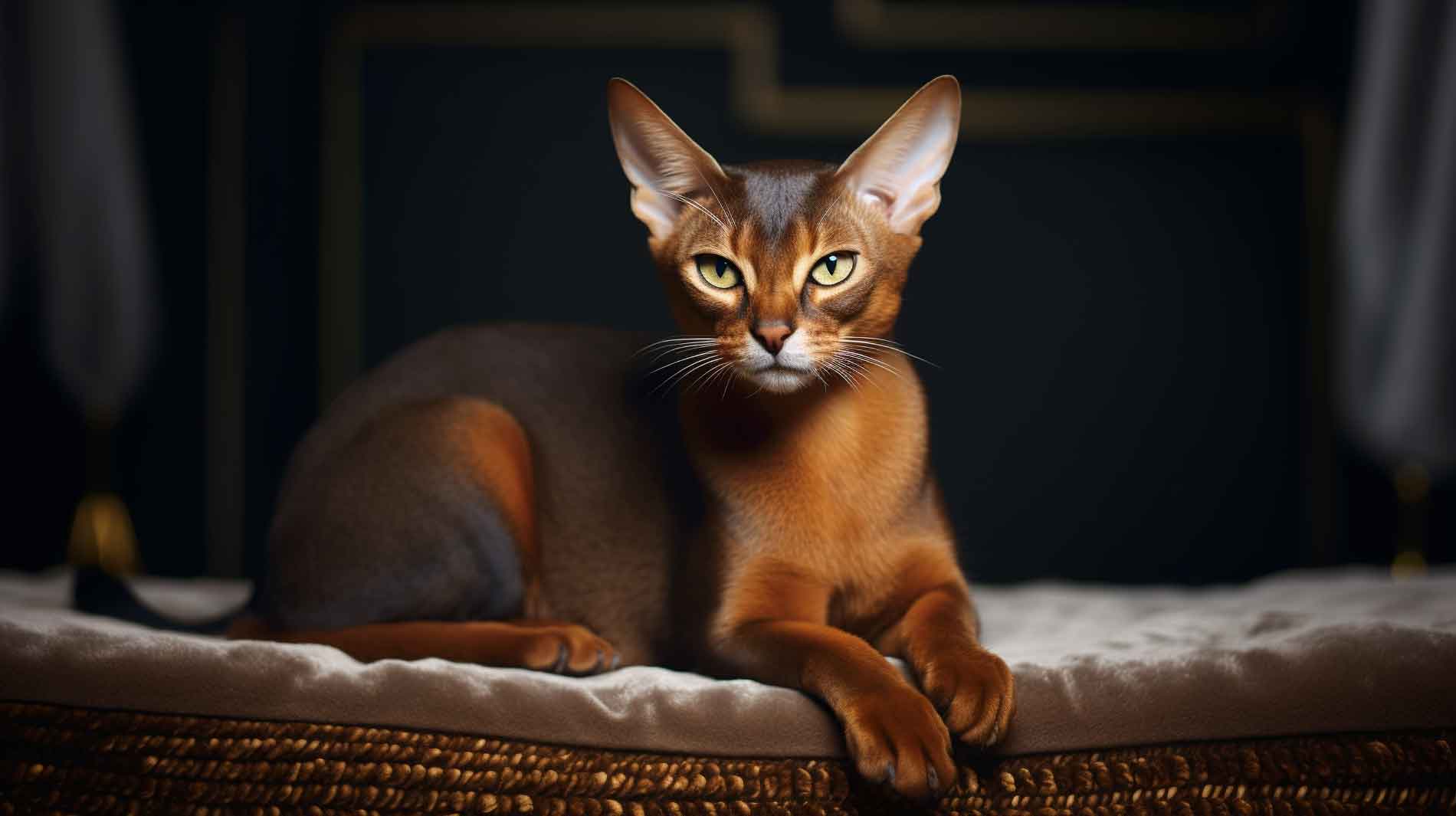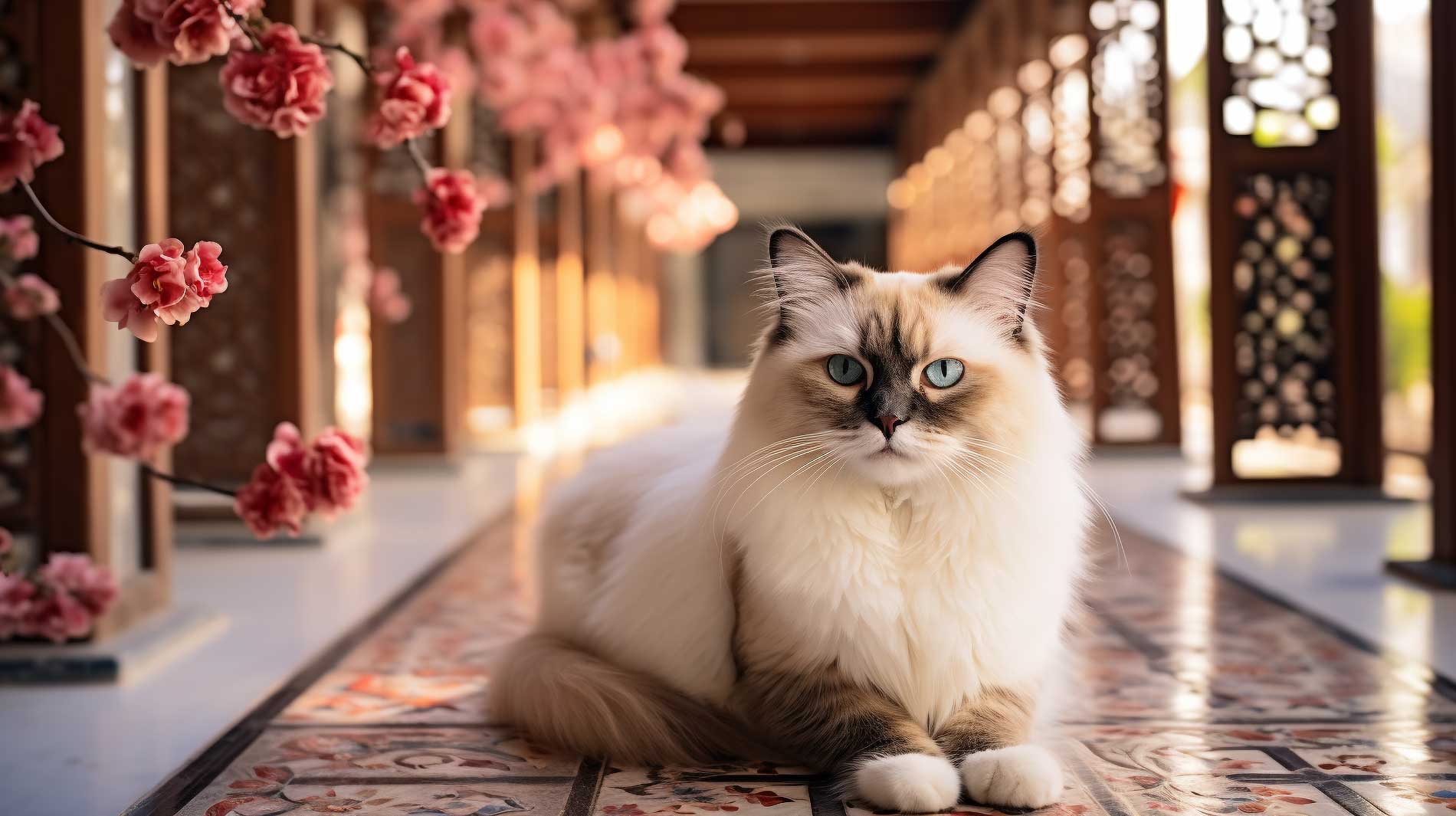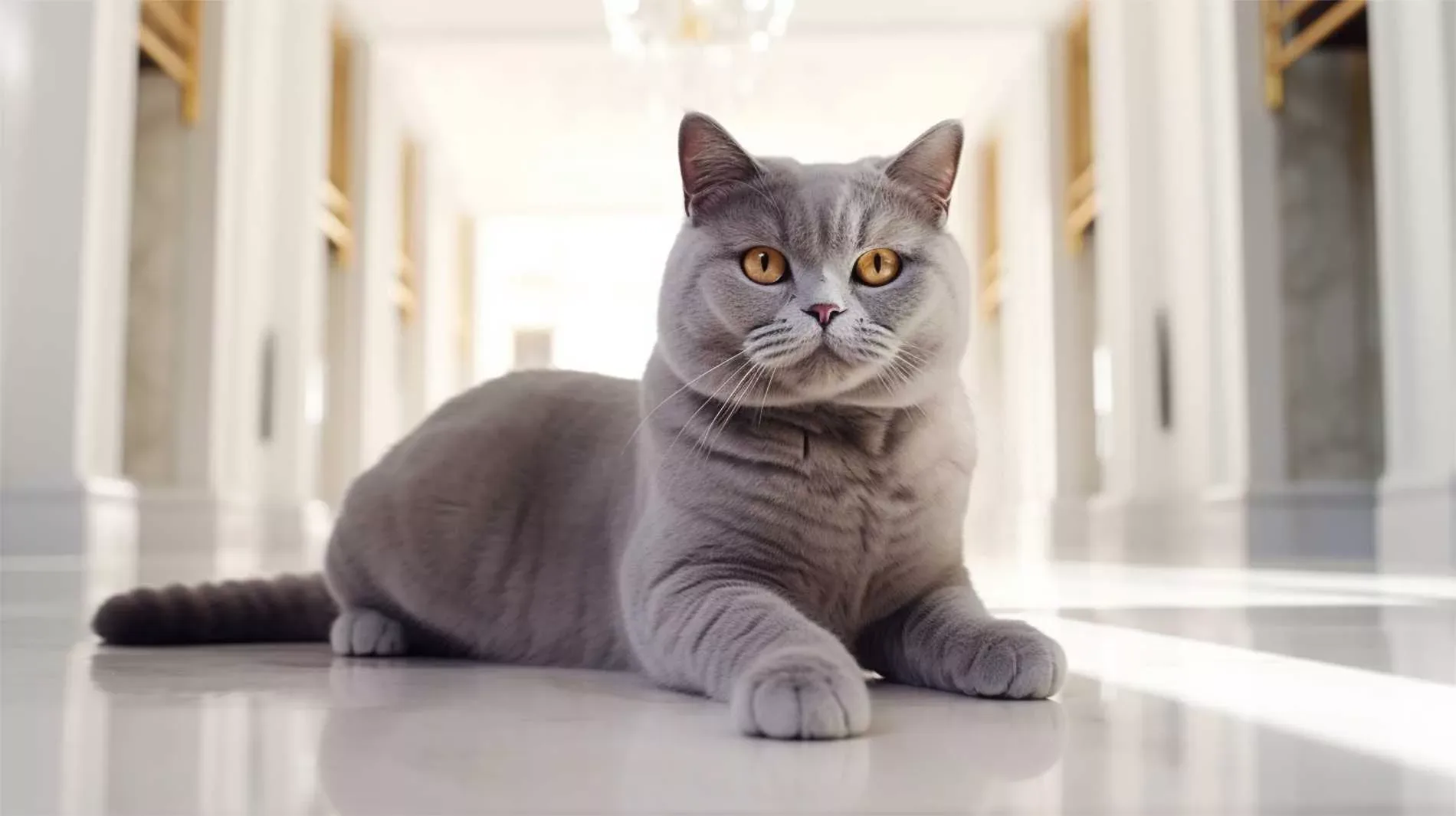Munchkin look & fur – defying the norms of feline grace
Distinctive and charming, we know Munchkin cats for their short legs, a trait reminiscent of the Dachshund dog breed (but genetically different). The breed’s characteristic short legs are the result of a naturally occurring genetic mutation. We’ll tell you more about this special gene in the “Health” section of this post.
Except for their short legs, these cats have well-proportioned and muscular bodies, with all other body features resembling those of a typical domestic cat. Their heads are usually a modified wedge shape, with bright and expressive eyes that come in all colors.
As for their fur, any kind of pattern and color combination you can think of is possible in this breed. They can have either short or semi-long fur, and their coat can exhibit any color or pattern, making each Munchkin truly unique in her appearance. The shorthair fur is medium-plush and requires weekly grooming to keep it healthy and shiny. If she has a longer coat, you should brush her more often, at least twice a week.
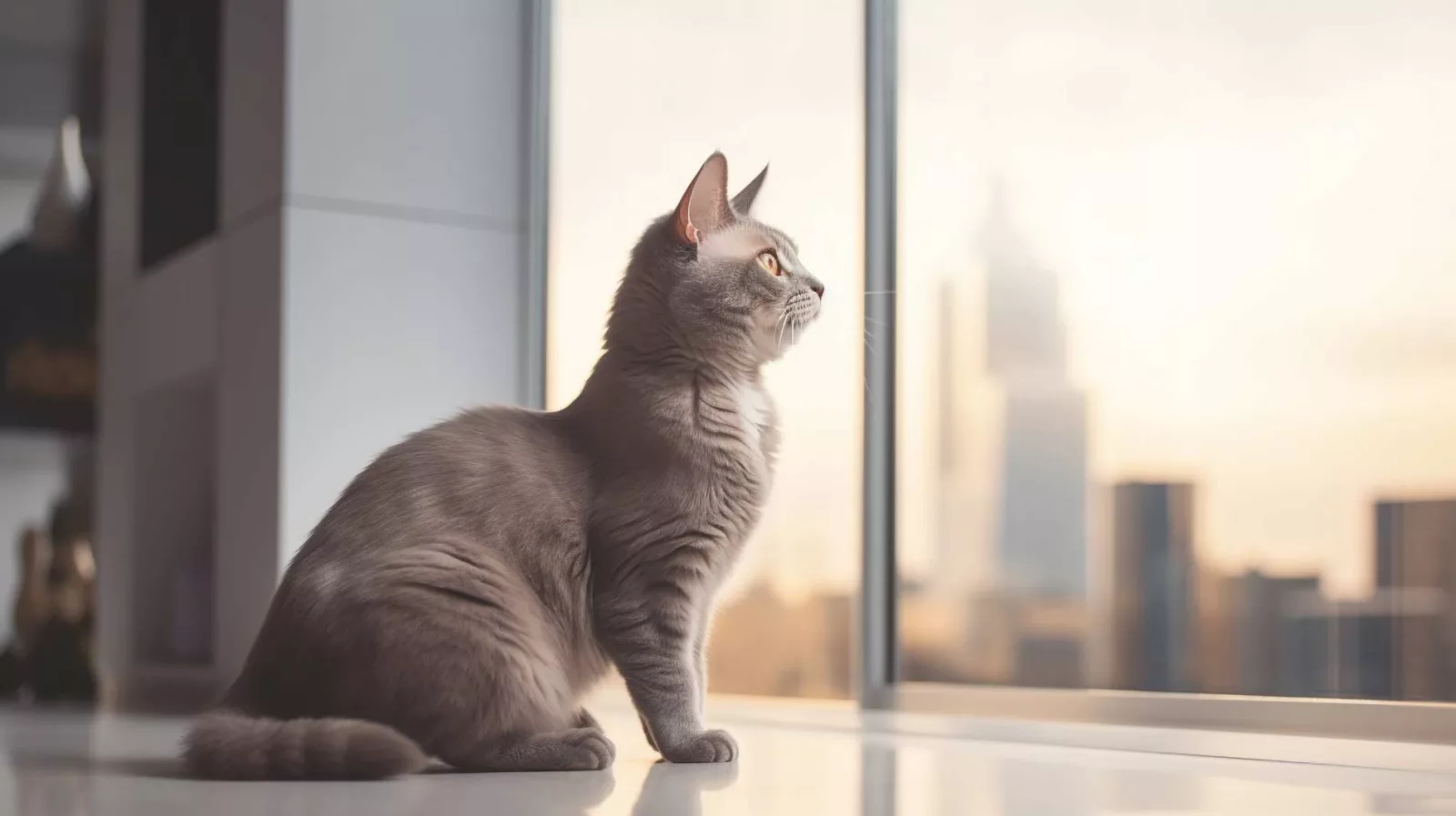
Munchkin Health – understanding genetics and issues
Debates among cat enthusiasts about this breed have been simmering for decades. Their appearance is based on pseudoachondroplasia, a type of dwarfism (short limbs but normal torso). The UFAW (universities federation for animal welfare), mention on their website that Munchkin cats may be more susceptible to osteoarthritis, which usually requires radiography for diagnosis and severity assessment.1 But there’s more to take note of.
Decoding the gene
Multiple sources report the gene that is responsible for the short legs to be semi-lethal. Meaning if two short-legged Munchkins produce offspring, 25% of the babies would inherit two copies of this gene and will die early inside the womb.1,2
The short-leg gene in them is autosomal dominant, and therefore, short-legged Munchkins carry one copy of this gene. Conversely, long-legged Munchkins do not possess this gene, resulting in them appearing like average cats, although they come from a munchkin breeding line. If a short-legged Munchkin and a long-legged Munchkin mate, they have a 50% chance of producing short-legged offspring. Conversely, when two long-legged Munchkins mate, their kittens will not display the short-legged trait, as they don’t carry the gene responsible for it.
Debate surrounding health issues
Critics raise concerns, suggesting these cats can suffer from multiple health complications. One such illness is Lordosis, where the spinal muscles develop shorter than normal.1 This abnormal growth leads to an inward curvature of the spine. Munchkins also appear to be susceptible to Pectus, another condition that leads to deformation of the sternum and rib cage.
This may cause early death in kittens or shortness of breath during physical exertion in an adult.
Rosemary Fisher – Director at the Governing Council of the Cat Fancy about Lordosis
Breeders collaborated with veterinary experts in the 1980s to perform a series of studies involving X-rays and physical exams, in an active effort to disprove potential health issues. These studies, although not deemed definitive due to the breed’s relative novelty and limited bloodlines, revealed no apparent spinal dysfunction, degenerative disc disease, or hip dysplasia.2
The International Cat Association (TICA), involved in these studies and one of the few organizations that recognize the Munchkin breed, maintains on their website that these cats are not more likely to develop arthritis or experience mobility issues compared to other breeds as they age. They assert that extensive research over the years has confirmed the absence of any harmful genes linked to this breed. Therefore, a Munchkin with a pedigree should not require testing for breed-specific diseases, unless they are a hybrid Munchkin.3
Some argue that the mutation does not disadvantage these cats to the point of affecting their survival. They seem to overlook the fact that the discovery of this breed occurred long after the domestication of cats. Therefore, natural selection no longer applies as it did in the wild; even cats with disabilities can survive on human-provided food. Moreover, cats don’t require exceptional jumping abilities for mating.
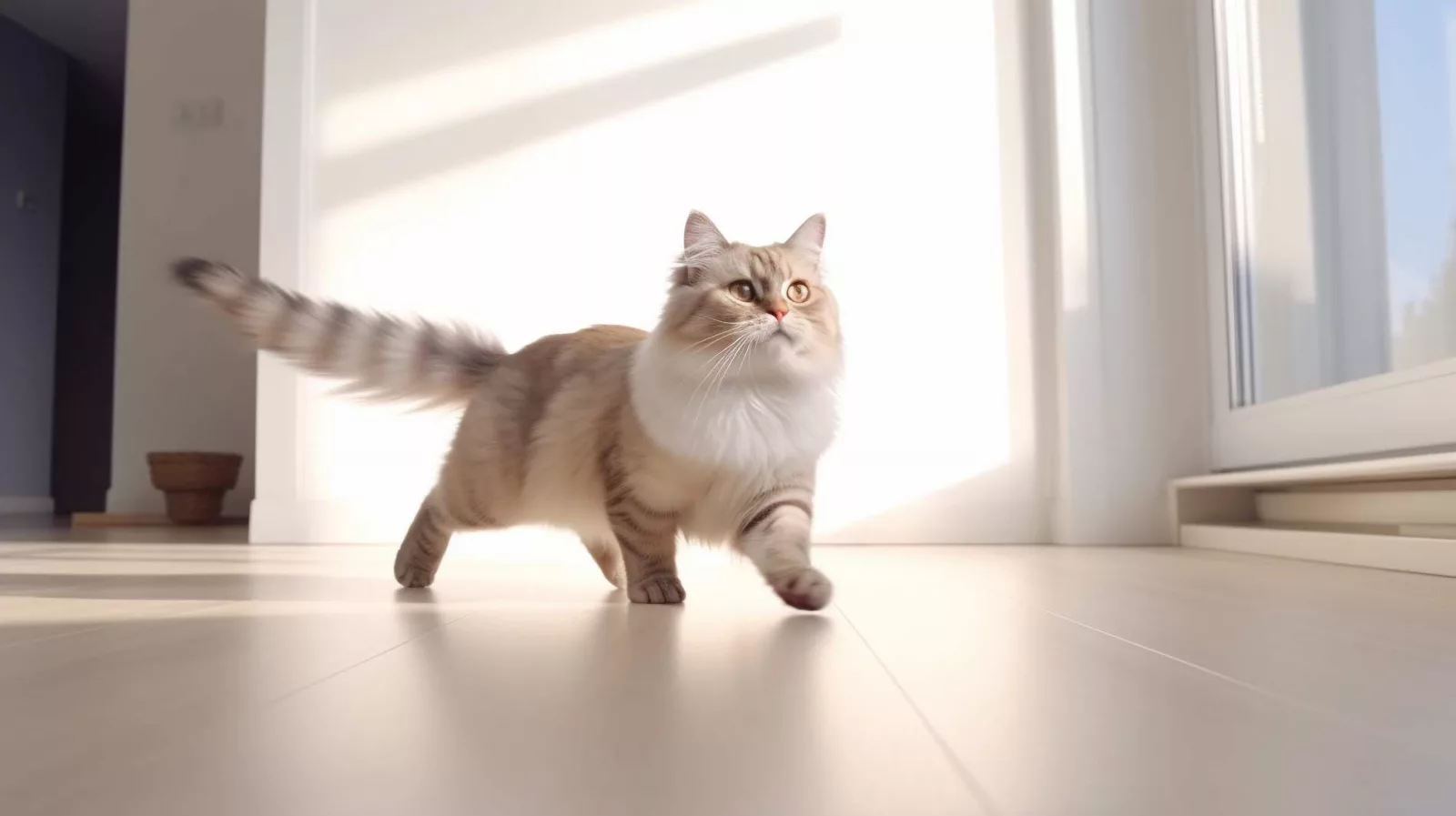
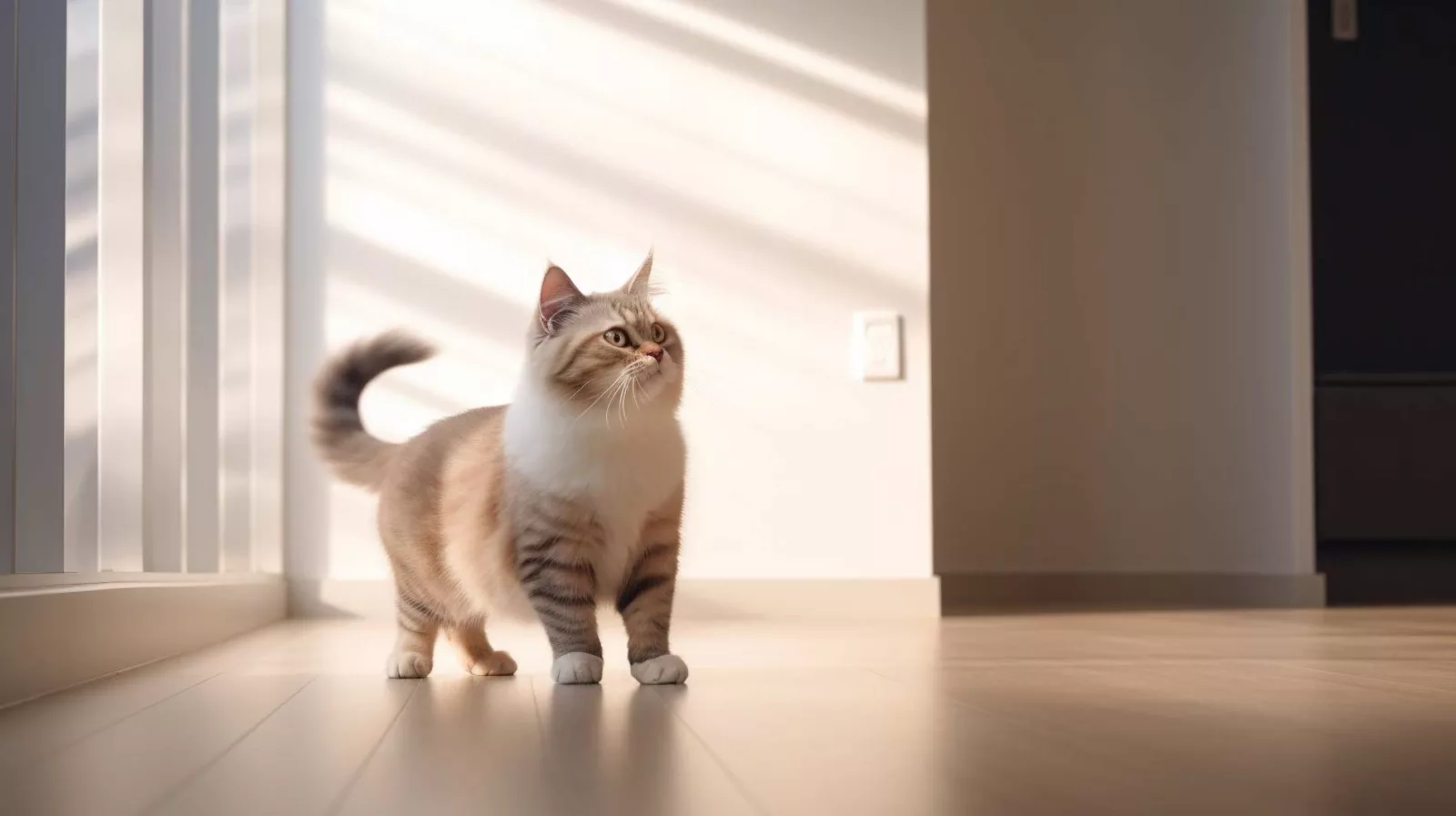
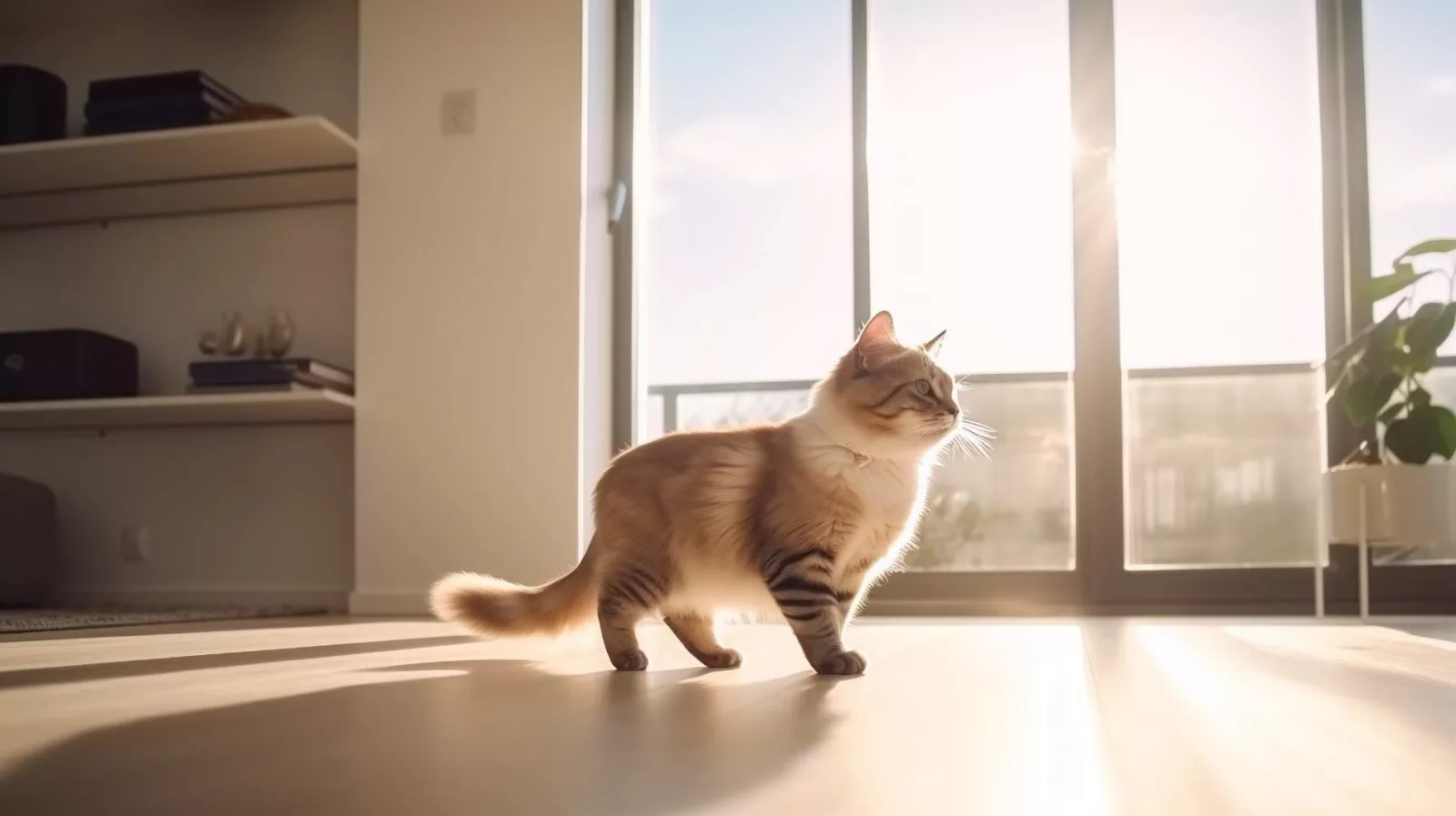
Munchkin Diet – nourishing the pint-sized feline
Despite their unique appearance, these cats don’t require a specific diet beyond the usual feline recommendations. Their nutritional needs align with those of average-sized cats, as they too need a balanced and varied diet to maintain their health.
Primarily, cats are obligate carnivores, meaning they require a diet rich in animal protein. Proteins are essential for cats to obtain essential amino acids, which aid in building tissues, supporting the immune system, and performing various metabolic functions. Cats can’t synthesize Taurine, a crucial amino acid, so it must be a part of their diet.
The food should also include a moderate amount of fats. Fats provide the most concentrated source of energy for cats and supply essential fatty acids that promote healthy skin and a shiny coat. While cats do not require a significant amount of carbohydrates in their diet, they can be beneficial and provide additional energy when supplied in small amounts.
A balanced commercial cat food, such as Dynasty’s Emperor Ragout, can serve as an ideal diet for a Munchkin cat. Apart from offering balanced nutrition, the ragout texture also promotes dental health by providing abrasion for your cat’s teeth. Remember to offer fresh water at all times, as hydration is crucial for a cat’s overall health. Though dry food can occasionally serve as snacks, the primary component of their diet should be wet food. Not only does it contain more moisture, but it also offers other health benefits.
Munchkin Character – a bundle of joy on tiny legs
Despite their distinctive appearance, Munchkins carry an undeniable cattitude. They embody all the typical feline traits: affectionate, high-energy, and sociable with both other animals and children. This cat’s playful nature and high energy levels make her a truly loveable pet.
Fans of the breed argue that they can perform most tasks that an average cat can do, although jumping to high places like kitchen counters is not typically within their reach. Some owners, however, see this as an advantage rather than a limitation. The cats are speedy runners, darting about like ferrets, and taking corners at high speed. They can hop onto most beds, chairs, and sofas, but they may opt for a roundabout path, perhaps hopping onto a lower chair before venturing onto a higher desk.
Known to be something of hoarders, having gained another nickname “Magpie”, Munchkins have a knack for acquiring small, shiny objects and hiding them away for future play. They are skilled hunters and delight in a thrilling game with a catnip mouse. However, once playtime is over, like any cat, they enjoy the gentle touch of a caring hand.
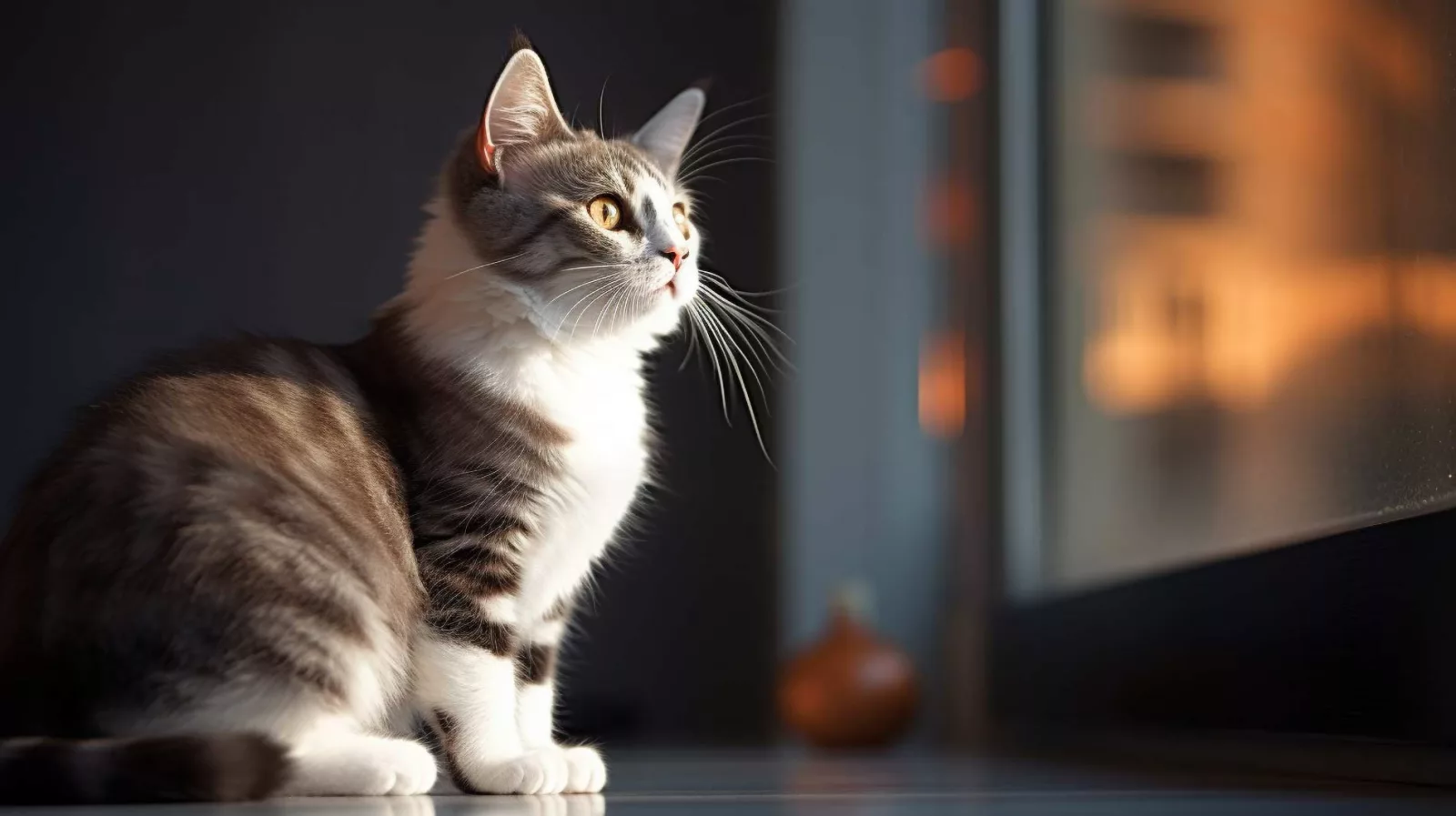
Munchkin History – Blackberry’s legacy
Many regard this breed, named after the diminutive inhabitants of Munchkinland in “The Wizard of Oz”, as relatively new. Still, there are reports about short-legged cats from as early as the 1930s. Due to their normal-sized bodies, people often refer to cats with short legs as “Sausage cats” or a “Kangaroo cats”. These nicknames have roots in both behavior and history. One distinct aspect of their behavior is that when something captures their interest, they will often sit back on their hind legs for a better view, much like a kangaroo. In the 1950s, a cat in the Soviet Union exhibited similar behavior and was subsequently called the “Stalingrad Kangaroo Cat. However, the Munchkin breed, as we recognize it today with its specific genetic traits, originated not in the Soviet Union, but in Louisiana, USA.1
All Munchkins registered today stem from a black-haired female called Blackberry, according to Helgren. Sandra Hochenedel found her hiding from a bulldog under a truck in 1983.2 She gave one of Blackberry’s kittens to her friend, who bred a whole colony that had access to the outdoors, seemingly doing well even though having to compete with long-legged cats for prey and mating opportunities.1
The Munchkin breed found a supporter in cat enthusiast, geneticist, and TICA judge Dr. Solveig who did research on the genes herself. In 1994, TICA admitted the breed into its New Breed development program. Only nine years later, the breed achieved TICA Championship status.5 The CCCA (Co-ordinating Cat Council of Australia) and SACC (Southern African Cat Council) also recognize it.6 Other organizations don’t accept the Munchkin as a breed.
Organizations that do not recognize this breed
- GCCF (Governing Council Of The Cat Fancy)
- ACFA (American Cat Fanciers Association)
- CCA (Canadian Cat Association)
- CFF (Cat Fanciers’ Federation)
- CFA (Cat Fanciers’ Associaton)
TCE’s own stance about the Munchkin breed
We urge you to reconsider before purchasing a Munchkin cat. We actively discourage breeding practices that promote unnatural physical characteristics for commercial gain. Cats, in their many forms, are indeed adorable, but this alone should not drive our desire to own them. These are living creatures, not mere objects of amusement. We value the privilege of sharing our lives with these captivating beings, who enrich our existence with their delightful personalities and affectionate behaviors. Therefore, we must cherish their presence as a fortunate privilege, not a service they provide. Or as Dr. Prentis said it:
If you want to see a short-legged cat, go and watch a cartoon. Leave the cat alone.
Dr. Prentis – Founder, director and lead veterinary surgeon at Hyde Park Veterinary Centre, London
Despite our stance on breeding, we firmly believe that all animals, regardless of their physical characteristics, deserve loving homes and quality care. If you have adopted a Munchkin cat, or are considering doing so, we commit ourselves to providing the necessary information to help you best care for and understand their unique needs. After all, every cat’s well-being is our ultimate priority.
Suitable for experienced cat owners with city apartment and full-time work
- Experience level: Beginner
- Housing: Apartment
- Activity level: High
- Energy level: High
- Trainability: High
- Attachment: Medium
- Friendliness: High
- Playfulness: High
- Talkativeness: Low
- Intelligence: High
